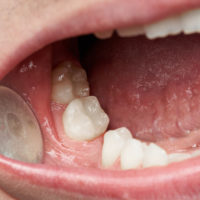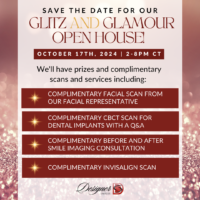 When the temporomandibular joint (TMJ) is unable to work properly, necessary functions such as eating, speaking, and yawning can become very difficult. Many people struggle with TMJ disorder (also known as “temporomandibular joint dysfunction” or “TMD”), which is characterized mainly by jaw discomfort that makes it difficult to function on a day-to-day basis. Left untreated, TMJ disorder can lead to a decline in overall oral health.
When the temporomandibular joint (TMJ) is unable to work properly, necessary functions such as eating, speaking, and yawning can become very difficult. Many people struggle with TMJ disorder (also known as “temporomandibular joint dysfunction” or “TMD”), which is characterized mainly by jaw discomfort that makes it difficult to function on a day-to-day basis. Left untreated, TMJ disorder can lead to a decline in overall oral health.
At Designer Smiles, our Webster cosmetic dentist Ann Haggard, DDS – as well as Dr. Lauren Eichblatt and the rest of our dedicated dental team – is committed to providing patients with top care in easing any jaw pain caused by TMJ disorder. With a variety of treatment options, our team will assess symptoms that arise and create a personalized course of action.
What Is TMJ Disorder?
The temporomandibular joint connects the jawbone to the skull on either side of the face. These two joints help with chewing, speaking, and other ranges of motion in the jaw. TMD occurs when the muscles and ligaments around those joints are compromised by inflammation, irritation, swelling, injury, or an alternative issue. In any case, this type of disorder can lead to excessive discomfort and lack of functionality.
There are multiple potential causes of TMJ disorder, including:
- Habitual teeth grinding
- Missing or misaligned teeth
- Arthritis in jaw joint
- Jaw injury or stress
What Are the Symptoms of TMJ Disorder?
Symptoms of TMJ disorder and the severity of those symptoms may vary from patient to patient. Common indications of the condition symptoms may include:
- Headache and/or earache
- Jaw clicking or popping
- Difficulty chewing or biting
- Soreness while yawning
- Trouble opening and closing mouth
- Ringing in the ears (tinnitus)
- Grinding sound in the joint
- Neck, shoulders, and back pain
How Is TMJ Disorder Treated?
TMJ disorder can be treated in a variety of ways, both surgical and non-surgical. As a treatment plan is developed, the appropriate procedure or therapy will be determined. At-home options like Armour Performance Mouthwear™, in-office injections, or physical therapy may help those with mild to moderate discomfort. For more severe cases, keyhole or open-joint surgery may be necessary.
In many cases, BOTOX® – the popular FDA-approved injectable treatment – can be an effective treatment for TMJ disorder. Many TMD symptoms stem from clenched, grinding muscles, so once injected, BOTOX® can alleviate and relax that muscle tension. The minimally invasive process typically has little to no downtime.
For more information on TMJ disorder and available treatments, contact our office to schedule a consultation.


